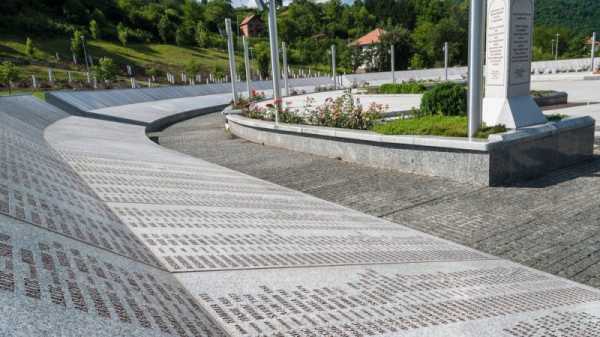
The legacy of 1990s Serbia, plagued by war and destruction, continues to leave its mark even today, even if many prefer not to be reminded of a very traumatic period, said Professor Dubravka Stojanović.
This was the starting point for the “Labyrinth of the 90s” exhibition that opened in Belgrade. Stojanović, head of the Department of History at the Faculty of Philosophy in Belgrade, spoke to EURACTIV.rs about why this decade is so important.
“Igor Štiks, Dejan Ubović, and I started preparing the exhibition two years ago when it seemed that neither that decade nor the Yugoslav wars were of interest to anyone. But because of all the tragedies that happened last month in Belgrade and Mladenovac (19 people killed during two mass shootings), the question arose – where did so much violence come from, and why are people so aggressive?” said the professor.
According to her, all these circumstances led to a “return to the 1990s”, hugely marked by The 1992-1995 Bosnian War.
“Although most of society pretends that nothing happened then, nor do they want to acknowledge what brought Serbia into that war – it marked almost every family somehow. People lost their jobs, properties, loved ones, and some had to move”, Stojanović said, adding that this decade will not end soon since “too many parts of society have an interest in it.”
The Bosnian War was the most devastating conflict in Europe since the end of World War II, killing 104,732 individuals in Bosnia, with about 2.2 million fleeing their homes, according to the UN’s International Residual Mechanism for Criminal Tribunals (ICTY).
The conflict also saw tens of thousands of rapes-mainly carried out by Serb forces – though the actual figures remain unknown as many cases were unreported due to stigma. And while the Serbian authorities never admitted or apologised for the genocide in Srebrenica in 1995, the ICTY pointed to the massacre of over 8,000 Bosniak men and boys in the town.
By early 2008, the ICTY convicted 45 Serbs, 12 Croats, and four Bosniaks of war crimes concerning the War in Bosnia.
“We know all the data from the 1990s; we had the Hague trials, all the documents are online, easily accessible, there is a huge archive. So, everyone can know and do know what happened, but they don’t want to internalise and do not want to understand what happened and what consequences reached us. And with this exhibition, we wanted to return to those emotions. The exhibition, of course, also brings data. Still, everything goes towards restoring that terrible feeling that decade brought, that feeling of anxiety, fear, claustrophobia, xenophobia, depression,” added the professor.
The war ended after signing the General Framework Agreement for Peace in Bosnia and Herzegovina in Paris on 14 December 1995. Peace negotiations were held in Dayton, Ohio, and were finalised on 21 November 1995. The Dayton Peace Agreement divided the country into two semi-autonomous parts — one run by the Serbs and the other shared by Bosniaks and Croats.
“All Serbian governments worked to keep that decade alive, and no government, even after the 2000s, did work on stating what happened, who is to blame for what, so that we can move on.”
The authorities are interested in “keeping us in that decade, and we are seeing this due to the current situation in Kosovo”, explains Stojanović.
“Both the Serbian and Kosovo authorities are terrified of the possibility of finally signing the peace agreement and are creating incidents, which, as we can see, bring us very close to the conflict. People from Kosovo say: ‘This situation has not been since ’99. ” the Professor added.
There is also an increased Serbian Orthodox Church’s influence in Serbian society. During Patriarch Irinej’s time in the 2000s, the church was present in Serbian society but somewhat more discreet, but this changed drastically with his successor.
“With Patriarch Porfiry, the Serbian Orthodox Church returned to its role in the nineties and during the war. He shows significantly greater ambitions than any patriarch had, and President Vučić needs that support, so he gives him that space. And the patriarch now deals with gender-sensitive language, women’s position, femicide, and abortion,” he added.
“So, he has a comprehensive grasp, one might say, even beyond politics. He interfered in critical social issues, leading us to a dangerous situation that we never had in Serbia. We never had religious fundamentalism because when we talk about it, we must know that it is society’s adaptation to religious rules and laws. All that we have had the opportunity to see in recent years have been very reminiscent of fundamentalist states of any type”, said Stojanović.
As mythomania is increasingly present in Serbian society, the professor believes that “we will not be cured of it as long as the ruling elite lives on it”.
“Here, I mean the political, economic, intellectual and church elites – a wide circle of people interested in maintaining this mythomania. It is the source of power, the source of all legitimacy. This is where the elites draw their strength; that’s why they scare society, constantly saying that war will break out tomorrow. Ruling elites continuously create problems because that’s how they rule. As long as we are in the hands of such a government and as long as we vote for them, that knot will not be untied”, concludes Stojanović.
(Aleksandra Vrbica | EURACTIV.rs)
Read more with EURACTIV

Slovakia against loosening GMO rules cites public concerns
Source: euractiv.com



